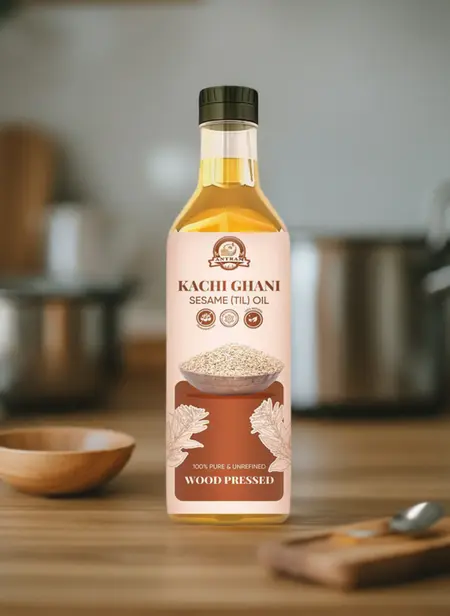Why Millets Are Important
Introduction to Millets
Millets might be small in size, but they are packed with nutritional value and sustainability. These ancient grains, once the cornerstone of human civilization, are making a major comeback. But why are millets important? Let’s dive deep into what makes this humble grain a superfood and why it’s crucial in today’s world.
What Are Millets?
Millets are a group of small-seeded grasses widely grown around the world, particularly in Asia and Africa. Unlike rice and wheat, which dominate the grain market, millets have often been overlooked despite their nutritional and environmental benefits. These grains have been cultivated for over 10,000 years, proving their worth through the centuries.
Nutritional Value of Millets
Millets are more than just a staple food; they are a nutritional powerhouse. Here’s why:
High in Fiber
Millets are loaded with dietary fiber, which promotes healthy digestion and supports heart health. Consuming fiber-rich foods like millets can lower the risk of chronic diseases.
Rich in Essential Vitamins and Minerals
Millets are a rich source of essential nutrients such as magnesium, phosphorus, and iron. They also contain B vitamins, which play a crucial role in maintaining energy levels and brain health.
Gluten-Free Option
For people with gluten intolerance or celiac disease, millets offer a fantastic alternative to gluten-containing grains like wheat and barley.
Health Benefits of Millets
Now that you know millets are nutritionally rich, let’s explore their numerous health benefits.
Helps in Weight Management
Due to their high fiber content and low-calorie count, millets can help you feel full for longer. This makes them an excellent food choice for those looking to lose or maintain weight.
Promotes Heart Health
Millets are rich in magnesium, which is vital for heart health. Regular consumption can help reduce the risk of heart diseases by lowering cholesterol levels and improving blood circulation.
Controls Blood Sugar Levels
The low glycemic index of millets makes them ideal for people with diabetes. They help in controlling blood sugar spikes, unlike refined grains such as rice and wheat.
Improves Digestion
The fiber content in millets aids in healthy digestion, preventing constipation and promoting gut health. This makes them beneficial for people with digestive issues.
Millets and Sustainable Farming
Beyond health, millets are crucial for the environment. Here’s why:
Drought-Resistant Crops
Millets are highly resilient and can be grown in arid regions with minimal water. This makes them a sustainable crop in times of water scarcity.
Low Water Requirement
Compared to water-intensive crops like rice, millets require significantly less water. This makes them ideal for regions facing water shortages.
Promotes Soil Health
Millets improve soil fertility by enhancing organic matter in the soil. They are often used in crop rotation to restore soil nutrients.
Varieties of Millets
There are various types of millets, each offering unique benefits:
- Pearl Millet (Bajra): Rich in antioxidants and known to improve heart health.
- Finger Millet (Ragi): High in calcium and ideal for bone health.
- Sorghum (Jowar): Excellent for digestion and weight management.
- Foxtail Millet: Great for lowering blood sugar and cholesterol.
- Barnyard Millet: Low in calories, making it ideal for weight watchers.
Millets in a Gluten-Free Diet
For those avoiding gluten, millets are a lifesaver. They are easy to incorporate into a gluten-free diet, replacing traditional grains in recipes like bread, porridge, and even desserts.
How to Cook Millets
Cooking millets is simple. Here’s a basic guide:
Basic Millet Preparation
- Rinse the millets thoroughly under cold water.
- Add 2 cups of water for every 1 cup of millet.
- Bring to a boil, then reduce the heat and simmer for 15-20 minutes.
Cooking Techniques
- Boiling: For soups and stews.
- Steaming: Ideal for fluffy grains.
- Baking: Use millets in gluten-free bread and muffins.
Millets in Global Cuisines
Millets are a staple in various cuisines across the globe:
- Indian Cuisine: Used in dishes like roti, porridge, and snacks.
- African Cuisine: Commonly used in traditional bread and porridge.
- Western Diets: Increasingly used in salads, soups, and gluten-free alternatives.
Millets and Weight Loss
Millets are ideal for weight loss because of their low-calorie content. They keep you full for longer and boost metabolism, making them a perfect addition to any weight-loss diet.
Millets for Diabetics
For diabetics, millets are a fantastic grain choice. They have a low glycemic index, meaning they are digested slowly, preventing spikes in blood sugar levels.
Environmental Impact of Growing Millets
Growing millets has a positive impact on the environment. They require fewer resources, reduce the carbon footprint, and contribute to eco-friendly farming practices.
Millets vs. Rice and Wheat
When comparing millets with rice and wheat, millets come out on top in terms of nutrition, health benefits, and environmental sustainability.
Why Millets Are Important for Global Food Security
As the global population grows, millets are emerging as a vital crop. Their resilience and adaptability make them essential in feeding the world, especially in areas prone to climate change.
Challenges in Promoting Millet Consumption
Despite their benefits, millets face several challenges, such as lack of awareness and availability. Cultural preferences for rice and wheat also pose a barrier to millet adoption.
Conclusion: The Future of Millets
Millets are more than just a trendy superfood. They are the future of sustainable, healthy, and environmentally conscious eating. As their popularity grows globally, they hold the promise of improving our health and safeguarding the planet.





